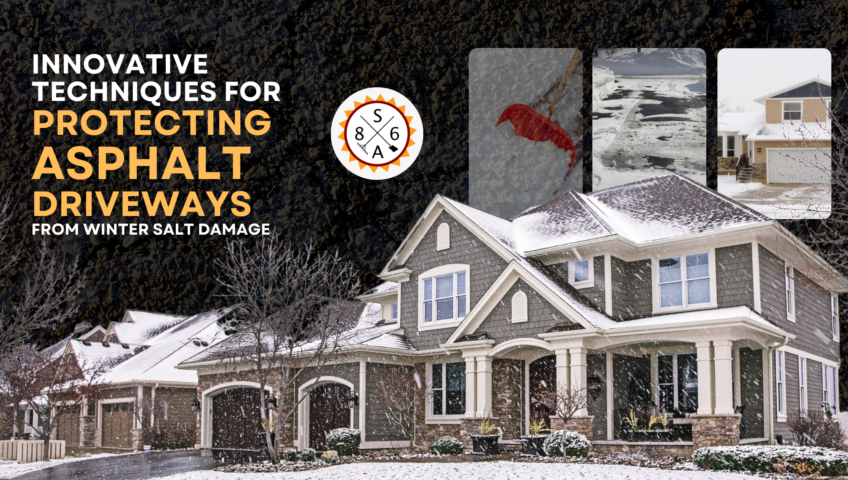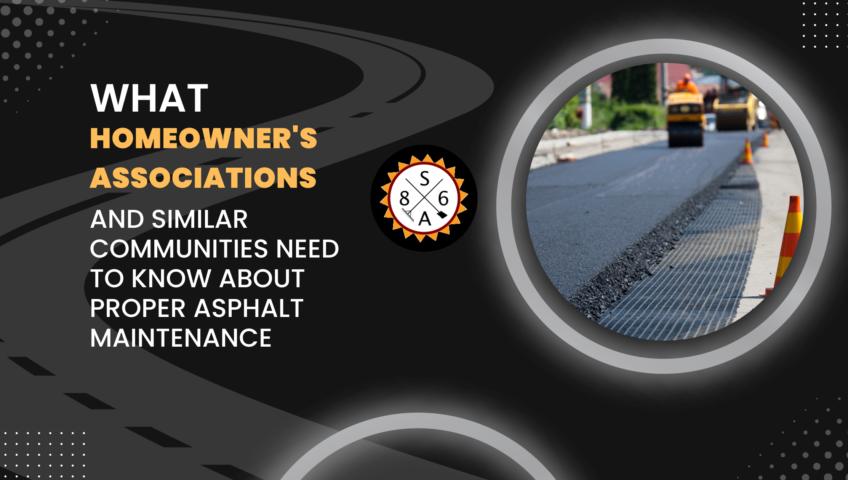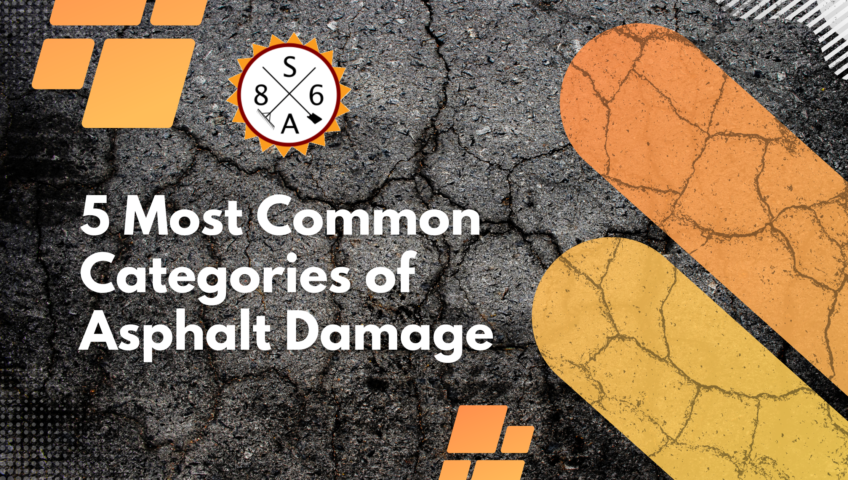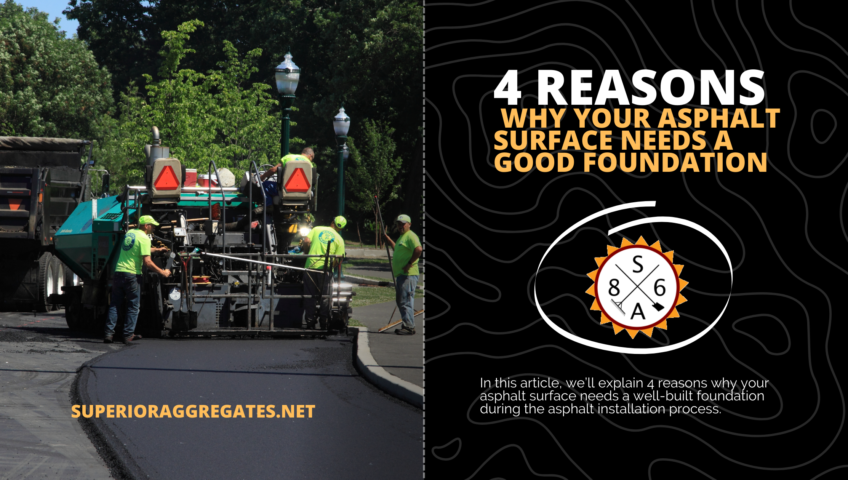
Innovative Techniques for Protecting Asphalt Driveways from Winter Salt Damage
Winter poses challenges for asphalt driveways, but with strategic techniques, homeowners can safeguard their surfaces from salt damage. Discover these top ten strategies to shield your driveway and ensure its longevity.
Asphalt driveways are susceptible to winter’s harsh conditions, especially the corrosive impact of salt used for de-icing. To counter this threat, homeowners can employ innovative techniques offered by asphalt companies and driveway repair specialists. Let’s delve into the top ten strategies that focus on protecting your asphalt driveway from winter salt damage.
- Sealcoating Defense: One crucial defense against winter salt damage is the application of a high-quality sealcoat every few years. This protective layer acts as a formidable barrier, offered by reputable asphalt companies, enhancing the longevity of your driveway and minimizing vulnerability to corrosive salts.
- Infrared Asphalt Repair: Addressing existing cracks promptly is essential to prevent salt infiltration. Opt for specialists utilizing cutting-edge infrared technology for asphalt repair. This innovative technique not only efficiently fixes surface imperfections but also creates a seamless and durable surface, making your driveway more resilient against winter salt challenges.
- Permeable Asphalt: Eco-friendly options like permeable asphalt offer a dual advantage. Besides being environmentally conscious, these surfaces allow water drainage, minimizing salt accumulation. This reduction in salt exposure contributes to a more robust driveway, reducing the need for frequent repairs. Collaborate with asphalt companies knowledgeable about permeable solutions for optimal protection.
- Heated Driveway Systems: Investing in a heated driveway system is a proactive measure that goes beyond conventional de-icing methods. These systems efficiently melt snow and ice, eliminating the need for excessive salt usage. Beyond protecting your asphalt, a heated driveway enhances safety during winter months, providing a comprehensive solution to winter challenges.
- Warm Mix Asphalt: Embrace the advancements in asphalt technology, particularly warm mix asphalt. Known for its resistance to cracking, this innovative mix offers durability against the corrosive effects of winter salt. Collaborate with asphalt companies well-versed in incorporating warm mix asphalt to ensure a driveway that can withstand the rigors of winter.
- Additives for Protection: During asphalt installation, consider enhancing your mix with additives designed for winter salt protection. Collaborate with asphalt companies experienced in incorporating these additives for optimal results. These additions fortify the asphalt, creating a more resilient surface that can withstand the corrosive impact of salt, extending the life of your driveway.
- Proper Drainage Solutions: Efficient drainage is key to minimizing salt exposure. Install a proper drainage system to redirect melting snow away from your asphalt driveway. By reducing the accumulation of salt-laden water, you significantly mitigate the risk of winter salt damage. Consult with experts in driveway installation for a system tailored to your property’s needs.
- Porous Asphalt and Pavers: Consider a hybrid design that combines porous asphalt with pavers. This innovative approach provides durability while allowing effective water drainage. The permeable nature of this combination minimizes the impact of winter salt on the driveway, offering a resilient solution that balances functionality and aesthetic appeal.
- Environmentally Friendly De-icing: Collaborate with asphalt companies offering eco-friendly de-icing alternatives. These alternatives provide effective ice melting without the corrosive impact of traditional salt. By opting for environmentally conscious de-icing methods, you contribute to protecting both your driveway and the surrounding ecosystem, promoting sustainability in winter maintenance practices.
- Reflective Coatings: Integrate reflective coatings into your asphalt surface for added protection. Beyond shielding against UV rays, these coatings act as a barrier against winter salt, contributing to a longer lifespan for your driveway. Consult with asphalt specialists experienced in applying reflective coatings for optimal results in both protection and aesthetic enhancement.
By adopting these innovative techniques, homeowners can fortify their asphalt driveways against winter’s challenges. These strategies, offered by asphalt companies and driveway repair specialists, ensure a resilient surface that stands strong against salt damage, maintaining both functionality and visual appeal throughout the winter months. Take proactive steps to safeguard your driveway and enjoy a pristine and enduring asphalt surface.
Winter poses challenges for asphalt driveways, but with strategic techniques, homeowners can safeguard their surfaces from salt damage. Discover these top ten strategies to shield your driveway and ensure its longevity.
Asphalt driveways are susceptible to winter’s harsh conditions, especially the corrosive impact of salt used for de-icing. To counter this threat, homeowners can employ innovative techniques offered by asphalt companies and driveway repair specialists. Let’s delve into the top ten strategies that focus on protecting your asphalt driveway from winter salt damage.
- Sealcoating Defense: One crucial defense against winter salt damage is the application of a high-quality sealcoat every few years. This protective layer acts as a formidable barrier, offered by reputable asphalt companies, enhancing the longevity of your driveway and minimizing vulnerability to corrosive salts.
- Infrared Asphalt Repair: Addressing existing cracks promptly is essential to prevent salt infiltration. Opt for specialists utilizing cutting-edge infrared technology for asphalt repair. This innovative technique not only efficiently fixes surface imperfections but also creates a seamless and durable surface, making your driveway more resilient against winter salt challenges.
- Permeable Asphalt: Eco-friendly options like permeable asphalt offer a dual advantage. Besides being environmentally conscious, these surfaces allow water drainage, minimizing salt accumulation. This reduction in salt exposure contributes to a more robust driveway, reducing the need for frequent repairs. Collaborate with asphalt companies knowledgeable about permeable solutions for optimal protection.
- Heated Driveway Systems: Investing in a heated driveway system is a proactive measure that goes beyond conventional de-icing methods. These systems efficiently melt snow and ice, eliminating the need for excessive salt usage. Beyond protecting your asphalt, a heated driveway enhances safety during winter months, providing a comprehensive solution to winter challenges.
- Warm Mix Asphalt: Embrace the advancements in asphalt technology, particularly warm mix asphalt. Known for its resistance to cracking, this innovative mix offers durability against the corrosive effects of winter salt. Collaborate with asphalt companies well-versed in incorporating warm mix asphalt to ensure a driveway that can withstand the rigors of winter.
- Additives for Protection: During asphalt installation, consider enhancing your mix with additives designed for winter salt protection. Collaborate with asphalt companies experienced in incorporating these additives for optimal results. These additions fortify the asphalt, creating a more resilient surface that can withstand the corrosive impact of salt, extending the life of your driveway.
- Proper Drainage Solutions: Efficient drainage is key to minimizing salt exposure. Install a proper drainage system to redirect melting snow away from your asphalt driveway. By reducing the accumulation of salt-laden water, you significantly mitigate the risk of winter salt damage. Consult with experts in driveway installation for a system tailored to your property’s needs.
- Porous Asphalt and Pavers: Consider a hybrid design that combines porous asphalt with pavers. This innovative approach provides durability while allowing effective water drainage. The permeable nature of this combination minimizes the impact of winter salt on the driveway, offering a resilient solution that balances functionality and aesthetic appeal.
- Environmentally Friendly De-icing: Collaborate with asphalt companies offering eco-friendly de-icing alternatives. These alternatives provide effective ice melting without the corrosive impact of traditional salt. By opting for environmentally conscious de-icing methods, you contribute to protecting both your driveway and the surrounding ecosystem, promoting sustainability in winter maintenance practices.
- Reflective Coatings: Integrate reflective coatings into your asphalt surface for added protection. Beyond shielding against UV rays, these coatings act as a barrier against winter salt, contributing to a longer lifespan for your driveway. Consult with asphalt specialists experienced in applying reflective coatings for optimal results in both protection and aesthetic enhancement.
By adopting these innovative techniques, homeowners can fortify their asphalt driveways against winter’s challenges. These strategies, offered by asphalt companies and driveway repair specialists, ensure a resilient surface that stands strong against salt damage, maintaining both functionality and visual appeal throughout the winter months. Take proactive steps to safeguard your driveway and enjoy a pristine and enduring asphalt surface.




